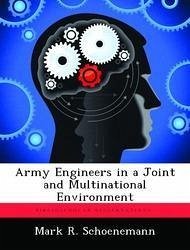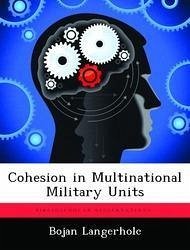
Army Engineers in a Joint and Multinational Environment
Versandkostenfrei!
Versandfertig in über 4 Wochen
52,99 €
inkl. MwSt.

PAYBACK Punkte
26 °P sammeln!
Army engineers operate increasingly as members of joint and multinational forces. Although doctrine reflects this reality, it is ambiguous regarding how commanders can best structure a headquarters capable of employing joint and multinational engineer units to achieve unified action. Additionally, ongoing transformation initiatives are significantly altering the Army engineer force, eliminating many headquarters which might have served in this role. The Army's proposed maneuver enhancement brigade (MEB), a multifunctional brigade integrating the contributions of engineer and other combat suppo...
Army engineers operate increasingly as members of joint and multinational forces. Although doctrine reflects this reality, it is ambiguous regarding how commanders can best structure a headquarters capable of employing joint and multinational engineer units to achieve unified action. Additionally, ongoing transformation initiatives are significantly altering the Army engineer force, eliminating many headquarters which might have served in this role. The Army's proposed maneuver enhancement brigade (MEB), a multifunctional brigade integrating the contributions of engineer and other combat support units under one command, has been suggested as a suitable headquarters for controlling joint and multinational engineer units. This monograph traces the evolution of Army involvement in joint and multinational engineering from World War II to the present to determine what key considerations determine the effectiveness of control structures established to achieve unified engineer action. It then examines the structure of the proposed MEB to determine whether it meets the minimum requirements to control joint and multinational engineer units. The analysis concludes that the current proposed MEB headquarters design may be capable of controlling a small joint or multinational engineer force. However, the brigade should be augmented with additional liaison officers (LNOs) to effectively integrate the efforts of these units. Commanders must determine the unique capabilities and limitations of their joint and multinational partners, and adjust control structures to best employ and support them. Further, additional engineer staff capability should be provided to effectively employ those joint or multinational construction units which lack design or construction management expertise.














